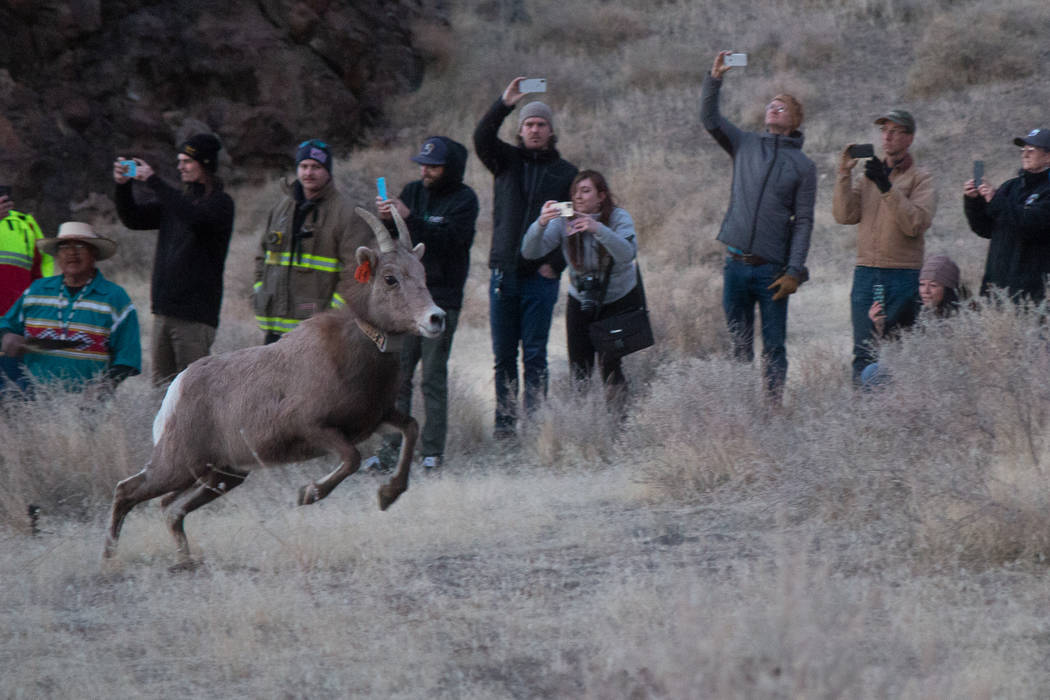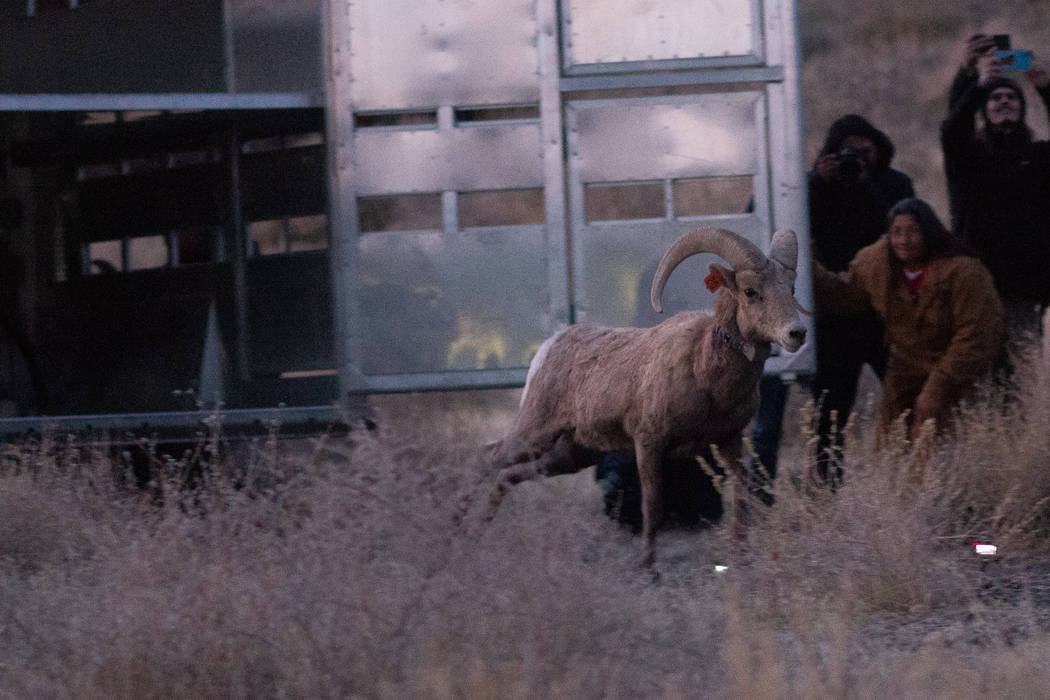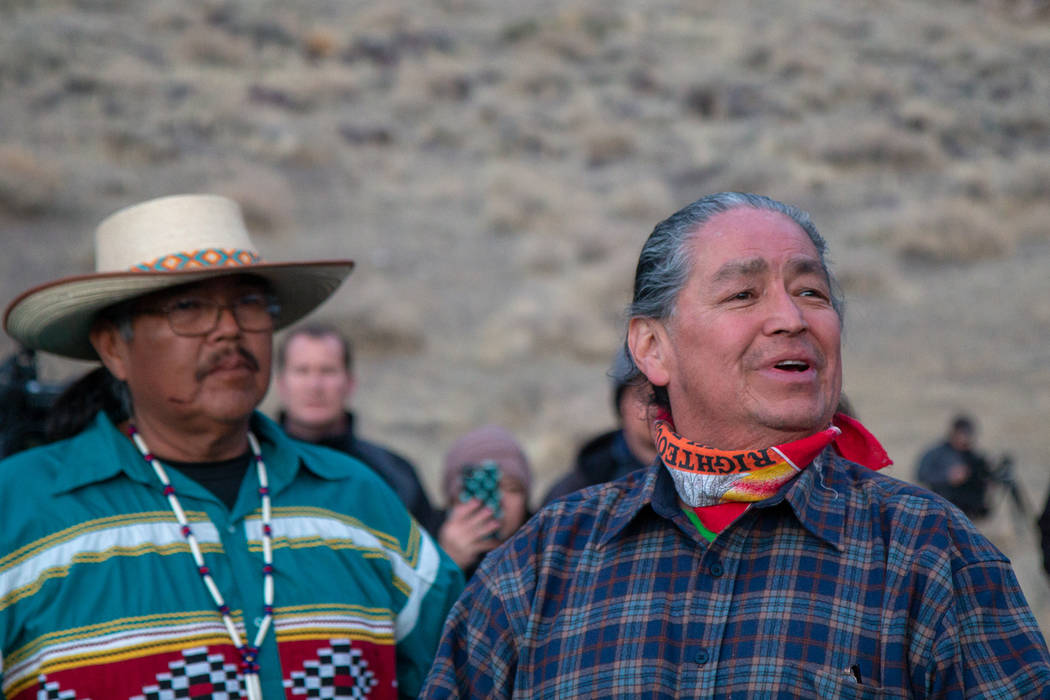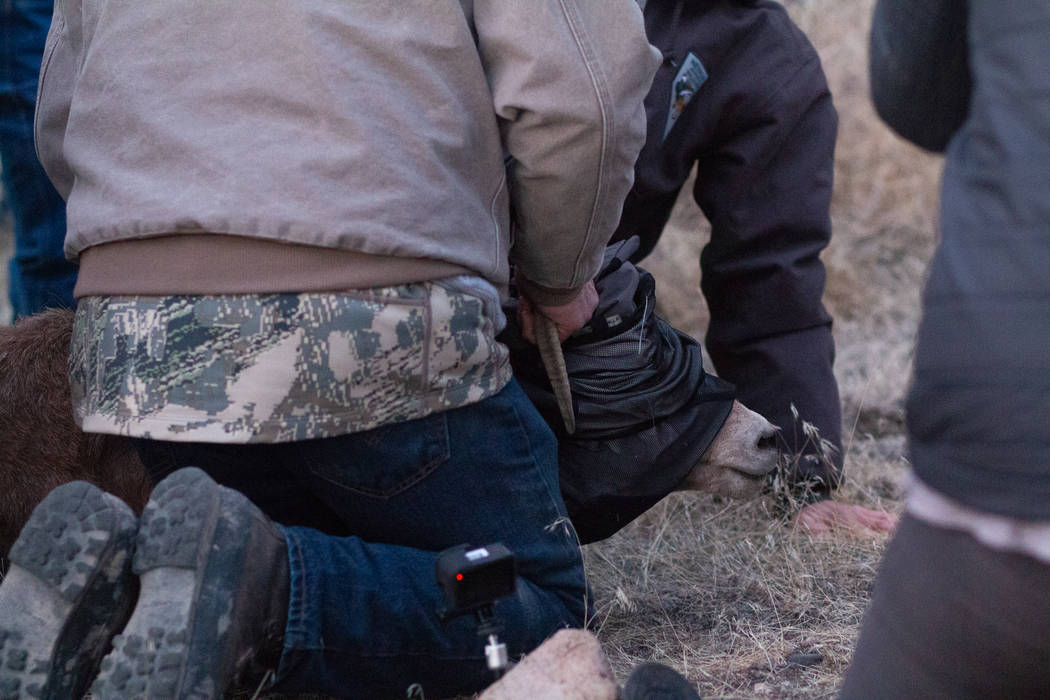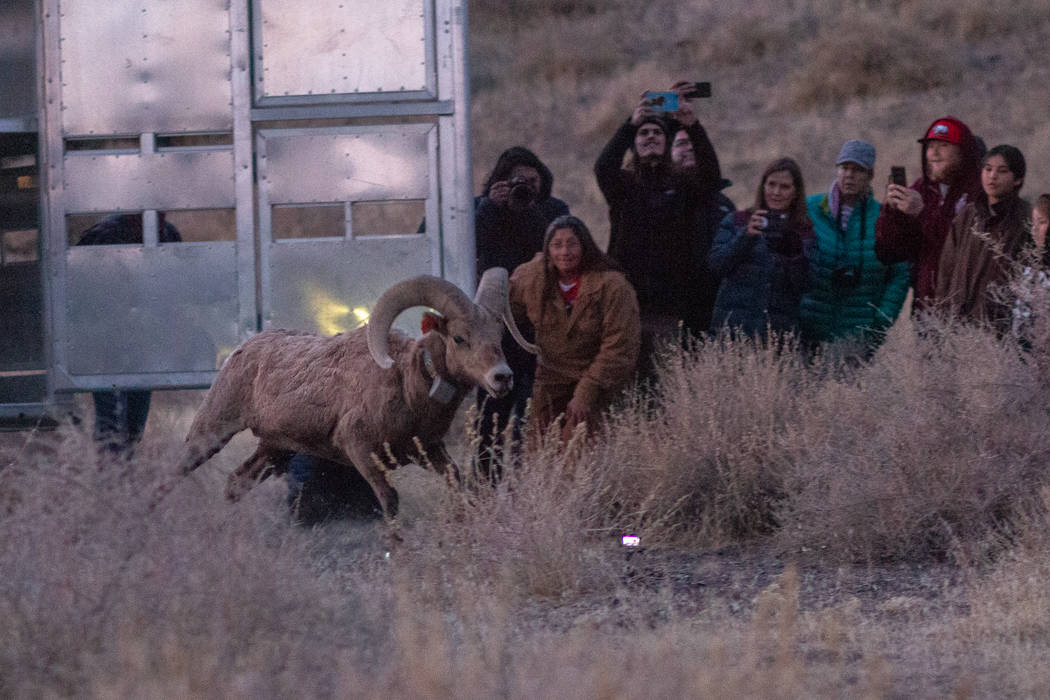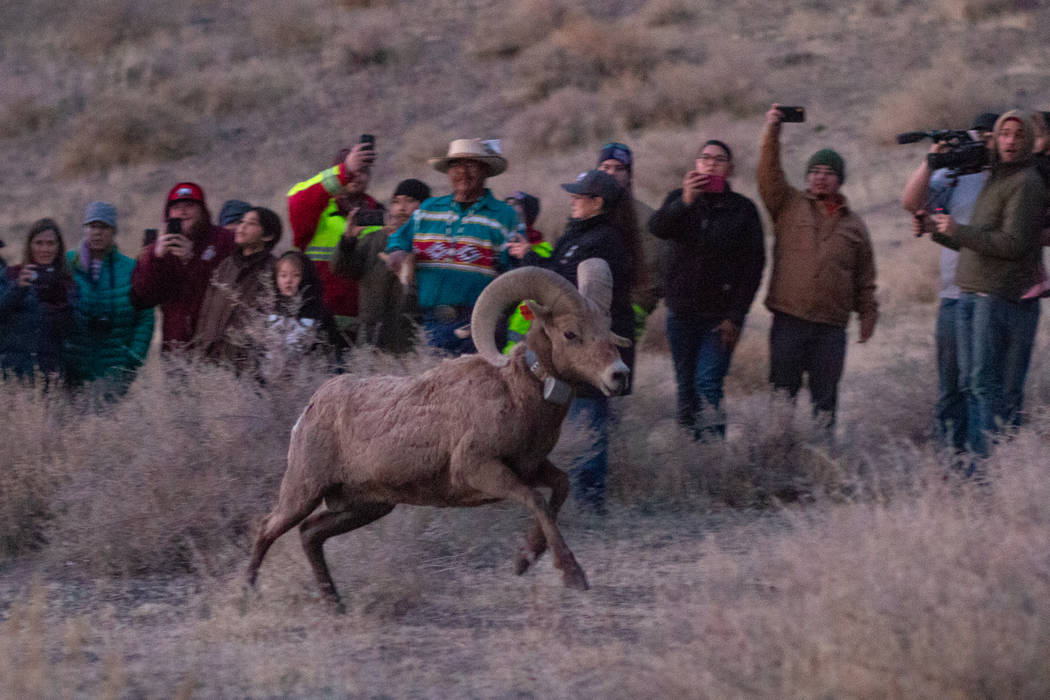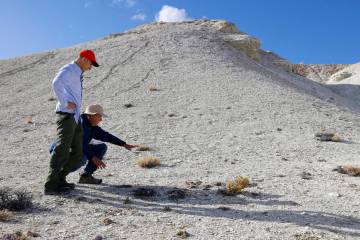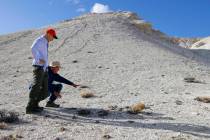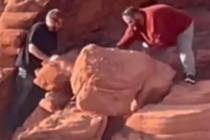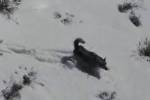After roughly a century, bighorn sheep return to Pyramid Lake
PYRAMID LAKE
One by one, they bolt out of the gates, all but ignoring the dozens of supporters who quietly cheer them on.
Past the crowds, they hoof it through the rocky hills jutting out above the picturesque waters of Pyramid Lake, some 50 miles north of Reno, at a frenetic pace as the sun sets behind the snow-capped mountains.
These ungulates took the first steps toward rebuilding a bighorn sheep population that once thrived in the Pyramid Lake mountain range but had been utterly wiped out.
As part of a reintroduction program several years in the works, the Nevada Department of Wildlife and the Pyramid Lake Paiute Tribe on Monday released 21 bighorns — captured earlier in the day in the Sheep Creek Range near Battle Mountain — into the hills above Pyramid Lake, marking the first time since the early 1900s that the species has been spotted in the range.
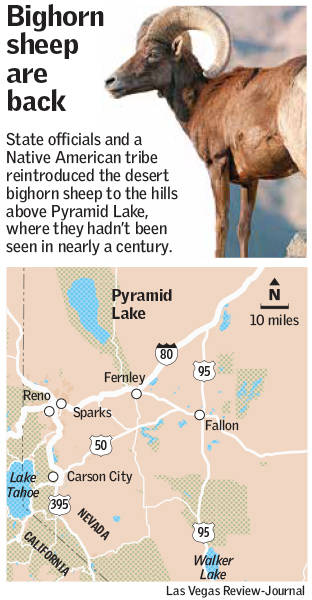
“It is an extremely important reintroduction both from a wildlife standpoint, as well as a cultural standpoint for many Native American tribes across the West,” longtime bighorn sheep conservationist Larry Johnson said.
The rocky desertscape that surrounds Pyramid Lake once brimmed with scores of the iconic sheep, as evidenced by the many petroglyphs surrounding the lake that depict bighorn sheep — historically a key food source for the native people.
During his travels through Nevada, noted explorer and military officer John C. Fremont described in a Jan. 11, 1843, journal entry walking along the eastern shoreline of Pyramid Lake and passing flocks of ducks, tufa (limestone) formations and herds and herds of bighorn sheep.
Shrinking population
But as American civilization continued its expansion toward the Pacific Ocean in the late 19th and early 20th centuries, and with the unregulated hunting and disease that came with expansion, the sheep population in the area and across the Western states dropped dramatically.
At one point, the total sheep population across the state dipped to around 2,000 in the mid-20th century, according to Nevada Department of Wildlife records.
In the Pyramid Lake range, it’s believed that the entire population was wiped out about a century ago, with the last recorded sighting of a bighorn sheep in the area made in the early 1900s by pioneers heading through Northern Nevada.
But now, with restoration efforts like Monday’s reintroduction that have relocated some 4,000 sheep within Nevada, the species is once again thriving in the state. An estimated 12,000 bighorn sheep now live in the Silver State, according the Department of Wildlife.
“We’ve been trying to restore sheep to every possible mountain range that they lived in back in the day,” said Mike Cox, statewide bighorn sheep program coordinator and staff biologist for the department.
The desert bighorn sheep is so associated with Nevada, it’s been recognized in Nevada law since 1973 as the official state animal.
Animals in the wild
Various efforts have been made since the 1980s to try to reintroduce sheep into the Pyramid Lake range, according to Pyramid Lake Paiute Tribe Vice Chairman Alan Mandell. But none of those efforts ever came to fruition until Monday.
“There’s nothing like seeing a wonderful, beautiful animal out in its natural world,” Mandel said.
The latest reintroduction effort started more than a year and a half ago, when Johnson approached the Pyramid Lake Paiute Tribe hoping to kick-start the reintroduction project.
In June 2018, the tribe approved working with the Department of Wildlife on the project. A resolution passed in November 2018 designated the bighorn sheep as a tribal species of protection. Funding for the project came from the Nevada Wildlife Record Book Foundation, Nevada Bighorns Unlimited and the U.S. Fish and Wildlife Service.
For all the joy brought by the reintroduction, one moment cast a slightly somber note over the day’s events.
After the first wave of sheep was released from a horse trailer, one ewe remained inside. With some coaxing, she finally made her way out of the trailer, only to collapse onto the dirt, unable to stand.
Cox said that she had a high temperature when they examined her before transporting her south to the reintroduction point, but that “she was looking good” after getting some fluids before making the three-hour trip to the release point.
If the ewe isn’t able to stand on her own by Tuesday morning, officials will likely be forced to euthanize her, Cox said.
Mandel called it “an unfortunate event,” noting that the transportation process, which involves getting netted and tied up before being moved for several hours to a new area, can be very stressful on the animals.
“It’s not a happy thing, but I hope that it more than makes up for it with the other sheep released,” Mandel said.
Contact Capital Bureau Chief Colton Lochhead at clochhead@reviewjournal.com or 775-461-3820. Follow @ColtonLochhead on Twitter.



